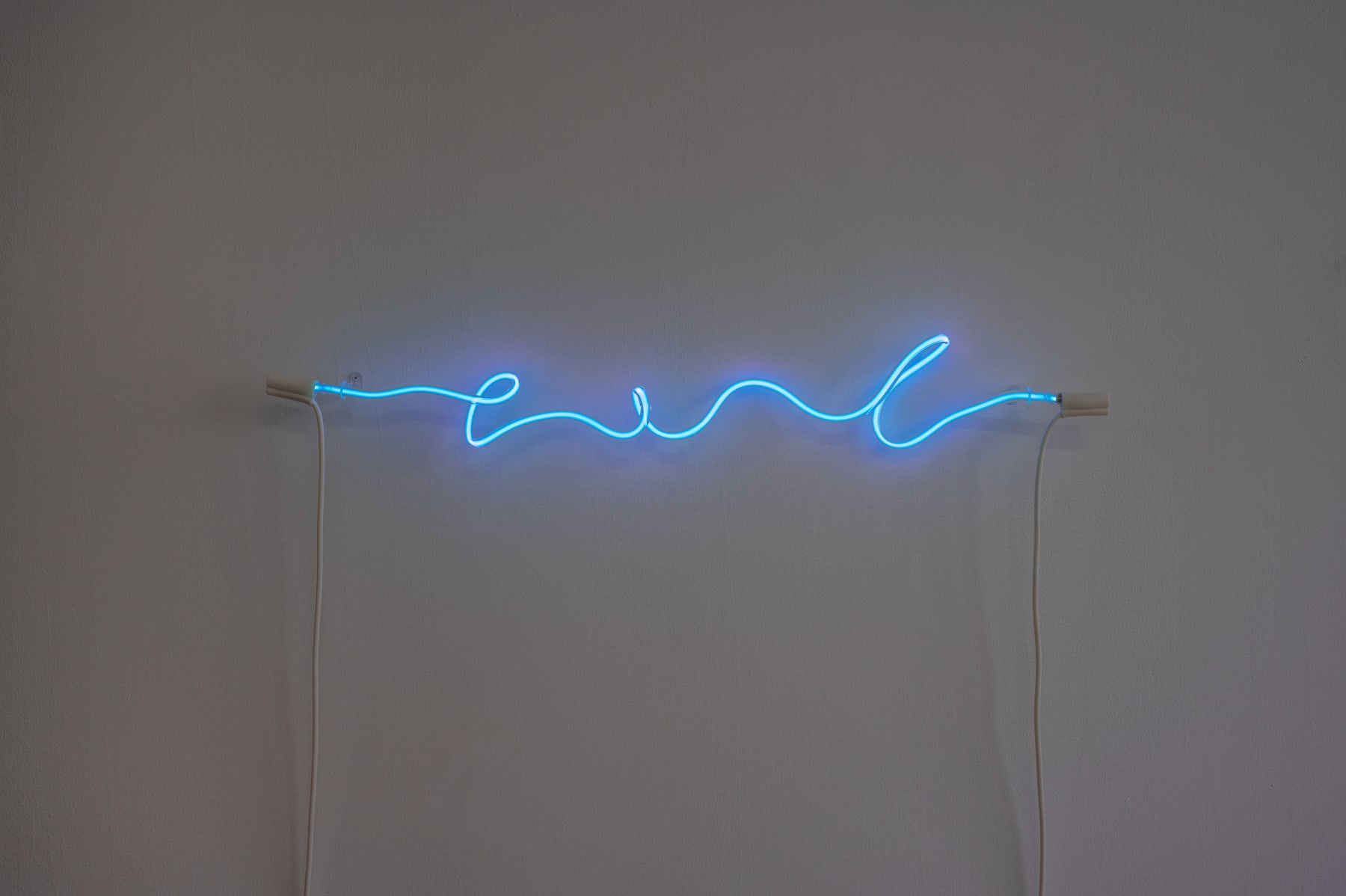Annesta Le
Clear Blue, 2020
Neon (glass, argon, wire)
7 x 39 x 3 1/2 in
17.8 x 99.1 x 8.9 cm
17.8 x 99.1 x 8.9 cm
AL0039
Copyright The Artist
Further images
Even though neon is solidly located in a twentieth-century landscape of consumption, the process gestures towards the medieval practice of alchemy—the transmutation of gasses and metals through flame. Despite being...
Even though neon is solidly located in a twentieth-century landscape of consumption, the process gestures towards the medieval practice of alchemy—the transmutation of gasses and metals through flame. Despite being a relatively new technology, neon has moved from the realm of everyday consumption into that of fantasy and nostalgia. Having been supplanted by other forms of illumination, neon brings to mind the romanticized recent past, disreputable districts, cinematic ambience, and, more recently, high art. Neon’s density of meaning—social, psychological, historical, mystical—adds an aspect of tension to Le’s sculptures. The excess of content is at odds with the simplicity of the final form. Neon, for Le, is representative of the ability of an object or subject to perform simultaneous and contradictory meanings. Neon illuminates the sacred and the profane equally.
Le fabricates her own neon sculptures in a glass shop in Brooklyn where her body movements determine the forms. Le approaches each work in an open-ended, improvisational way that results in a final composition reflecting the artist’s own internal image - a fusion of the somatic and psychological that is constantly changing through diligent artistic, psychoanalytic, and cultural work. The alchemy of the practice, with its illusive materials combined with the sheer physicality of production - heating and bending the glass tubes into unique shapes - matches her sensibilities.
Le fabricates her own neon sculptures in a glass shop in Brooklyn where her body movements determine the forms. Le approaches each work in an open-ended, improvisational way that results in a final composition reflecting the artist’s own internal image - a fusion of the somatic and psychological that is constantly changing through diligent artistic, psychoanalytic, and cultural work. The alchemy of the practice, with its illusive materials combined with the sheer physicality of production - heating and bending the glass tubes into unique shapes - matches her sensibilities.











